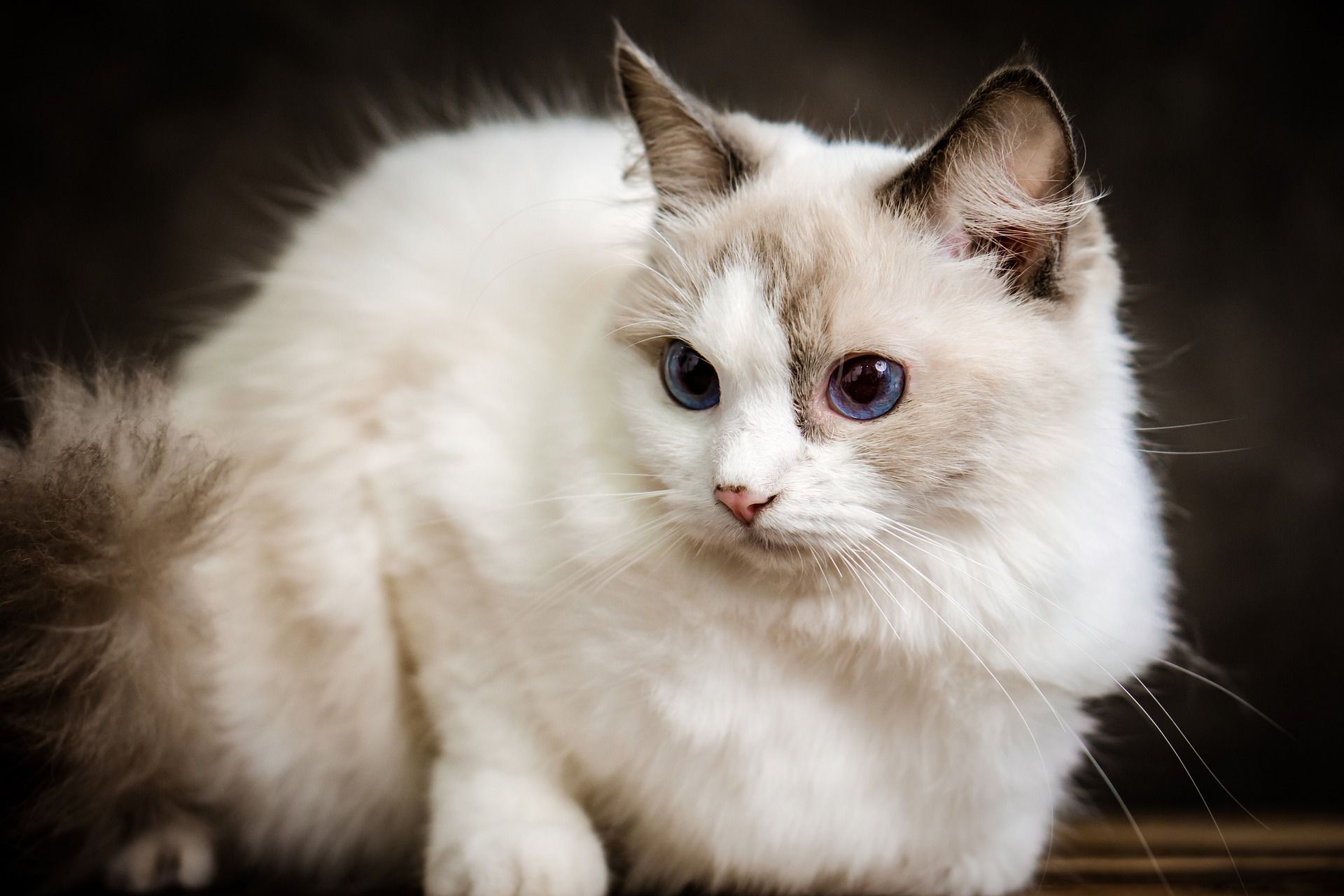The Ragdoll: A Huge Remarkably Sweet and Amenable Cat
The Ragdoll is one of the largest of all cat breeds, their name is derived from their tendency to be very placid and relax when handled. Very quiet cats!

The name is well chosen, because few cats are easier to handle or more ready to sit on a lap than a Ragdoll. One of the largest of all cat breeds, this cat has a confused history—supposedly, the original Ragdolls were developed from a litter of kittens born in California that became unusually limp and “floppy” when picked up.
Table of Contents
Origin
US
Grouping
Longhairs.
It is thought that long hair in domestic cats arose as a genetic mutation. In cooler climates this trait would be advantageous and so its frequency in the cat population probably increased, and was later selected for by cat breeders. Wild cats have thicker rather than longer coats and have no role in the ancestry of domestic longhairs.
Breed History
For this recently developed breed there is a considerable lack of consensus as to the exact origins of early progenitors.
What is proposed is that in the 1960s this breed arose in California as a result of a breeder starting with two foundation males, Raggedy Ann Daddy Warbucks and another she called Blackie. Both of these were offspring of Josephine, a white (Persian or Turkish Angora type) cat; Warbucks and Blackie were fathered by two different sires.
Those sires continue to be an unknown, with one theory reporting that it was a Persian that had Birman type markings and others saying the white Persian was crossed with a seal point Birman in one of the progenitor crosses, and that this offspring was bred with a sable Burmese.
The coat texture does not match Persian cats, so at some point it is likely either Birman or Burmese, or perhaps both were crossed with the white Persian-type, or perhaps this occurred at another point in breed development.
The Ragdoll name derives from the tendency to be calm, resulting in relaxed muscle tone when handled. They have become a popular breed.
In The International Cat Association (TICA), 2002 registration numbers topped 23000 and this breed was fourth in popularity in that registry behind Maine Coon, Persian, and the Bengal. In Cat Fanciers’ Association (CFA), recent registration placed this breed twelfth in popularity with much smaller numbers registered (761).
No outcrosses are allowed in CFA.
The Fédération International Féline (FIFé) recognized the breed in 1992 and the Governing Council of the Cat Fancy (GCCF) in 1991.
The Ragamuffin is a more recently developed breed of cats that utilized some Ragdoll influence in development. Though the Ragdoll breed has a resemblance to the Birman, the latter is a smaller cat, is produced in only the mitted pattern and possesses a less angulated face.
Physical Characteristics
Weight
Female 10-14 lb (4.5-6 kg), male 12-20 lb (5.5-9 kg).
Coat Patterns
- Pointed: Colorpoint is accepted in Cat Fanciers’ Federation (CFF) in Siamese colors of chocolate, seal, lilac and blue. The CFA adds red and cream. The TICA registry adds others such as cinnamon, and fawn. Hairs may be solid, shaded, or smoke; points solid, lynx, tortie.
- Van: Ears, tail and upper mask pigmented, ideally the rest of the cat is white though up to 20% body colored is accepted in CFA. This pattern can be shown in CFA.
- Mitted: (white on forefeet to carpus-gloving gene), on rear limbs up and over the hock (gauntlet) and white at ruff and chin (not shown in CFA, but are registered).
- Bi-color: (inverted moderately symmetrical V mask on forehead, in white, that includes whisker pads and extends contiguously under chin, chest, along underside). White feet are mitted due to the gloving gene. The color of the point of the ears determines the assigned coat color. This pattern may be shown in CFA.
- Haircoat: The semi-long haircoat is fine and glossy. Hair is shorter on head and forelimbs. Some describe the coat as having a minimal wooly undercoat (CFA profile), but other sources describe the coat as single. This coat is described as “rabbit fur” in texture because it is so fine. The coat can take up to two years to mature. Body color can be deeper than in the traditional colorpoint breeds. Coat color tends to darken with age.
Eyes
Blue-vivid, moderately large sized, oval.
Points of Conformation
These are large cats, heavy-set build both in fore and rear. A modified wedge shaped medium sized skull, full muzzle and a medium to short straight nose, and wide set ears are medium - large sized with rounded tips. Paws are large, round, and body musculature is well developed. Tail is long and bushy and tapers slightly. Legs are long, with hind limbs being longer than the forelegs.
Grooming
These cats have low tendency to mat. They have low-moderate grooming needs. They have a moderate shedding tendency only. A steel comb or other tool can be used gently twice a week.
Breed Behaviour and Traits
- Very quiet cats
- Affectionate
- Extremely docile
- Playful, and enjoy human contact.
- Reduced hunting and fighting instincts are apparently selected for in a typical Ragdoll cat.
- Name derives from their tendency to be very placid and relax when handled (though they do not “flop”, or lose all muscle tone).
- Some may follow people around and are sociable with children and other pets.
- Adaptable, and will leash train easily
- Excellent pets in households with seniors, other pets and children.
- Not much for climbing and jumping around the home, more accurately a lap cat.
- They are also soft voiced cats.
- Good for apartment life.